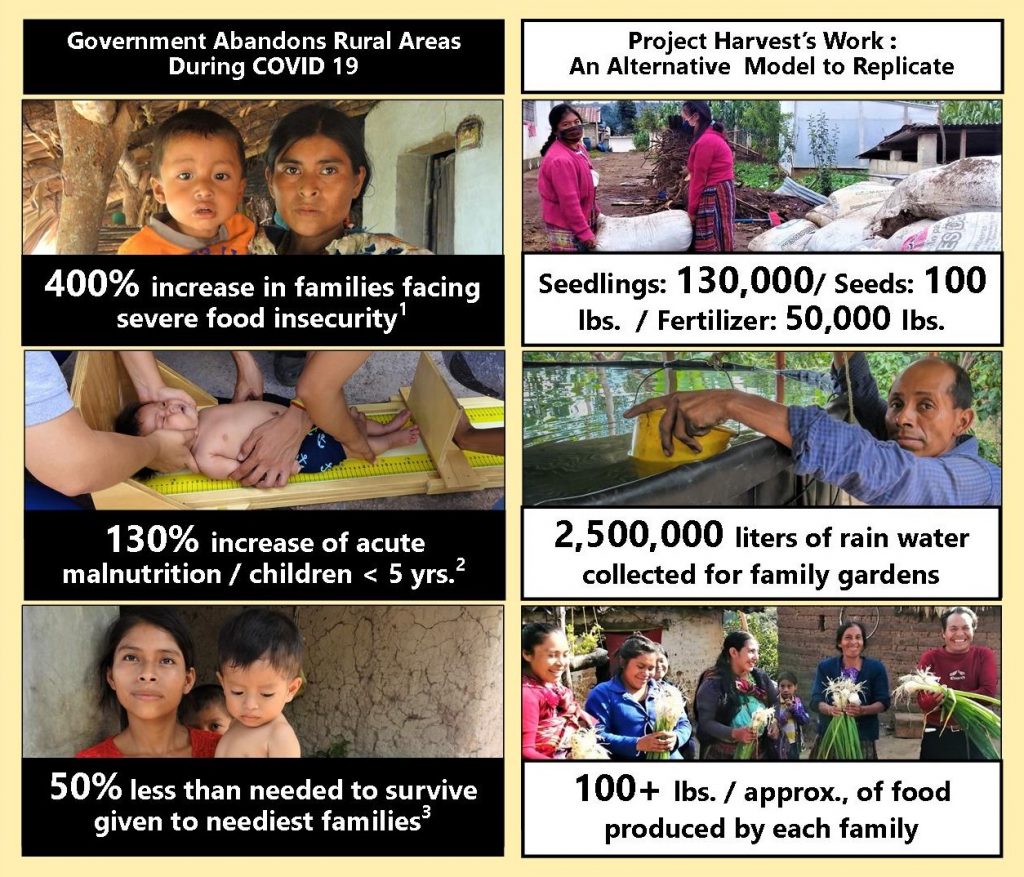In Guatemala’s rural “dry corridor” over a million people require food assistance (Oxfam), the result of the global pandemic compounded by years of neglect and the negative impacts of climate change. Project Harvest works with 500 families in this area haunted by hunger. The Project’s permanent program is a development model which provides these families the means of growing some of their own food, capturing rain water and thus shielding them from the food insecurity crisis made worse by COVID 19.
Project Harvest’s proven model has the potential of helping thousands of rural families. Unfortunately, the government’s rural development model focuses largely on supporting the monoculture production of crops for export. This government model exacerbates historical inequalities regarding land tenure, cheap labor and the exploitation of natural resources. These policies leave most rural families extremely vulnerable to shocks like the pandemic as illustrated in the grim statistics below.
The Project Harvest model implemented in 12 communities where it works is supporting the most vulnerable families by strengthening their capacities and empowering women. Project Harvest offers tangible hope to families who are producing their own nutritious food using the resources and skills imparted in the Project’s horticultural method. Project Harvest would like to see the national government present an agenda for strategic change by investing in rural communities and promoting an agenda to combat hunger.
Notes: 1. In relation to 2019 2. In the first four months of the pandemic – exceeding the total number of cases in 2019 – The Ministry of Public Health and Social Assistance 3. $36 of the $72 needed to comply with the 2,100 kcal / person / day is the only government program given to the most vulnerable rural families in a one-time food ration promised to be delivered to families to supply a month of food.

